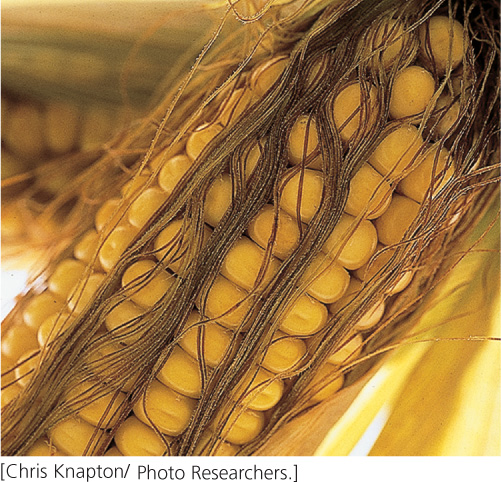19.1 Techniques of Molecular Genetics Have Revolutionized Biology
In 1973, a group of scientists produced the first organisms with recombinant DNA molecules. Stanley Cohen at Stanford University and Herbert Boyer at the University of California School of Medicine at San Francisco and their colleagues inserted a piece of DNA from one plasmid into another, creating an entirely new, recombinant DNA molecule. They then introduced the recombinant plasmid into E. coli cells. These experiments ushered in one of the most momentous revolutions in the history of science.
Recombinant DNA technology is a set of molecular techniques for locating, isolating, altering, and studying DNA segments. The term recombinant is used because frequently the goal is to combine DNA from two distinct sources. Genes from two different bacteria might be joined, for example, or a human gene might be inserted into a viral chromosome. Commonly called genetic engineering, recombinant DNA technology now encompasses many molecular techniques that can be used to analyze, alter, and recombine virtually any DNA sequences from any number of sources.
The Molecular Genetics Revolution
The techniques of recombinant DNA technology are just part of a vast array of molecular methods that are now available. These molecular techniques have drastically altered the way in which genes are studied. Previously, information about the structure and organization of genes was gained by examining their phenotypic effects, but molecular genetic analysis allows the nucleotide sequences themselves to be read. This analysis has provided new information about the structure and function of genes and has altered many fundamental concepts of genetics. Our detailed understanding of genetic processes such as replication, transcription, translation, RNA processing, and gene regulation has been obtained through the use of molecular genetic techniques. These techniques are used in many other fields as well, including biochemistry, microbiology, developmental biology, neurobiology, evolution, and ecology.
Recombinant DNA technology and other molecular techniques are also being used to create a number of commercial products, including drugs, hormones, enzymes, and crops (Figure 19.1). A complete industry—biotechnology—has grown up around the use of these techniques to develop new products. In medicine, molecular genetics is being used to probe the nature of cancer, diagnose genetic and infectious diseases, produce drugs, and treat hereditary disorders.

CONCEPTS
Molecular genetics and recombinant DNA technology are used to locate, analyze, alter, study, and recombine DNA sequences. These techniques are used to probe the structure and function of genes, address questions in many areas of biology, create commercial products, and diagnose and treat diseases.
Working at the Molecular Level
The manipulation of genes at the molecular level presents a serious challenge, often requiring strategies that may not, at first, seem obvious. The basic problem is that genes are minute and every cell contains thousands of them. Individual nucleotides cannot be seen, and no physical features mark the beginning or the end of a gene.
Let’s consider a typical situation faced by a molecular geneticist. Suppose we want to use bacteria to produce large quantities of a human protein. The first and most formidable problem is to find the gene that encodes the desired protein. A haploid human genome consists of 3.2 billion base pairs of DNA. Let’s assume that the gene that we want to isolate is 3000 bp long. Our target gene occupies only one-millionth of the genome, so searching for our gene in the huge expanse of genomic DNA is more difficult than looking for the proverbial needle in a haystack. But, even if we are able to locate the gene, how do we separate it from the rest of the DNA?
537
If we succeed in locating and isolating the desired gene, we would next need to insert it into a bacterial cell. Linear fragments of DNA are quickly degraded by bacteria so the gene must be inserted in a stable form. It must also be able to successfully replicate or it will not be passed on when the cell divides. If we succeed in transferring our gene to bacteria in a stable form, we must still ensure that the gene is properly transcribed and translated.
Finally, the methods used to isolate and transfer genes are inefficient and, of a million cells that are subjected to these procedures, only one cell might successfully take up and express the human gene. So we must search through many bacterial cells to find the one containing the recombinant DNA. We are back to the problem of the needle in a haystack.
Although these problems might seem insurmountable, molecular techniques have been developed to overcome them. Human genes are routinely transferred to bacterial cells, where the genes are expressed.
CONCEPTS
Molecular genetic analyses require special methods because individual genes make up a tiny fraction of the cellular DNA and they cannot be seen.